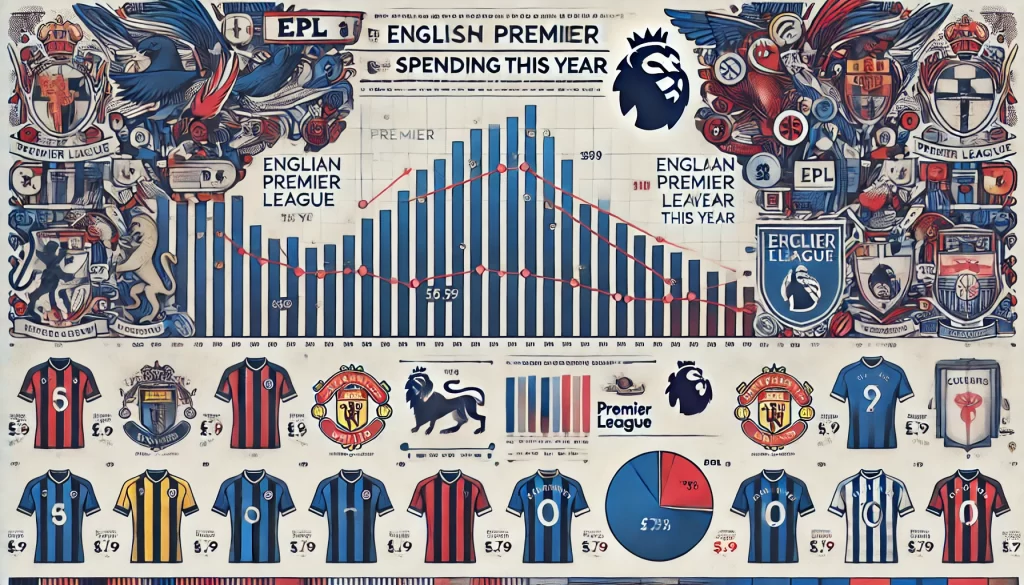
Premier League Spending – Summer Transfer Decline: Key Reasons Unveiled
The Premier League, known for its colossal spending during the transfer windows, has witnessed a noteworthy shift this summer. After years of escalating expenses, the top clubs’ spending appears to be dwindling. What is driving this unexpected change? Let’s delve into the key reasons behind the reduced transfer expenditure amongst giants like Manchester United, Chelsea, Arsenal, and Liverpool.
Economic Aftermath of the Pandemic
The financial repercussions of the COVID-19 pandemic continue to weigh heavily on many clubs. Despite the return of fans to stadiums and the revival of matchday revenue streams, the scars of the economic downturn have yet to heal completely.
- Revenue Losses: Many clubs suffered significant losses due to empty stadiums and reduced commercial activities during the height of the pandemic.
- Cost-Cutting Measures: To compensate for these deficits, clubs have been more conservative in their spending, prioritizing financial stability over extravagant transfers.
Implementation of Financial Fair Play (FFP)
The governing bodies of football have become increasingly stringent with the enforcement of Financial Fair Play regulations. With strict guidelines on spending relative to club revenue, Premier League teams are compelled to curb their transfer market activities.
- Balancing the Books: Clubs must ensure that their spending does not exceed their generated income, leading to a more cautious approach in the transfer market.
- Potential Penalties: Violating FFP rules could result in hefty fines or even bans from European competitions, deterring clubs from overspending.
Focus on Youth Development
Another significant factor influencing the decline in transfer spending is the enhanced focus on nurturing homegrown talent. Clubs are increasingly investing in their academies, aiming to cultivate the next generation of football stars.
- Long-Term Investment: Developing young players is seen as a sustainable and financially viable strategy, reducing the need for big-money signings.
- Compliance with Regulations: League rules encouraging the integration of homegrown talent make it imperative for clubs to prioritize youth development.
Case in Point: Premier League Giants’ Strategies
Manchester United
Manchester United has been relatively quiet in the transfer market compared to previous windows. The club’s focus seems to have shifted towards promoting academy products such as Brandon Williams.
- Academy Emphasis: United’s strategy revolves around integrating young talent into the first team, ensuring long-term benefits.
- Strategic Signings: While there have been notable signings, the club is meticulous, targeting players that fill specific gaps rather than splurging on numerous acquisitions.
Chelsea
Chelsea, known for its significant spending sprees, has also taken a step back. The club’s emphasis has shifted towards promoting talents from its famed academy, renowned for producing top-tier players.
- Sustainability: Chelsea has recouped a significant amount of money by selling homegrown stars such as Mason Mount and Conor Gallagher.
- Strategic Spending: When Chelsea does enter the market, the focus is on acquiring players who can make an immediate impact.
Arsenal
Arsenal has tailored its approach towards strategic and financially prudent signings. The club’s recent transfers indicate a focus on acquiring young, promising talents with resale value rather than established stars commanding hefty fees.
- Value for Money: Arsenal’s recruitment strategy seeks to strike a balance between cost and potential, targeting players who represent value for money.
- Youth Integration: The integration of young talents like Bukayo Saka and Emile Smith Rowe underscores Arsenal’s commitment to youth development, although the latter was sold to Fulham for a significant profit.
Liverpool
Liverpool has also opted for a more reserved stance in the transfer market, prioritizing squad stability and internal growth over high-profile acquisitions.
- Cohesion and Continuity: The club’s success in recent years has been built on a stable squad, with few changes to the core team.
- Pragmatic Approach: Liverpool’s transfer dealings are strategic, targeting specific needs such as depth in certain positions rather than making wholesale changes.
Impending Change in Transfer Market Dynamics
The shift in transfer spending habits reflects an evolving landscape in football. Clubs are becoming more financially savvy, emphasizing sustainable growth, and strategic planning.
- Shift in Focus: The emphasis is increasingly on financial prudence and sustainable growth, influencing the broader dynamics of the transfer market.
- Future Trends: As clubs continue to adapt, we may see a long-term transformation in spending patterns, with more focus on youth development and strategic signings.
Final Word
The decline in Premier League summer transfer spending is attributed to multiple factors, from the economic fallout of the pandemic to the stringent enforcement of FFP regulations and a growing emphasis on youth development. As clubs like Manchester United, Chelsea, Arsenal, and Liverpool adapt to these changing dynamics, the future of transfer spending in football’s top tier promises to be both financially prudent and strategically driven.
